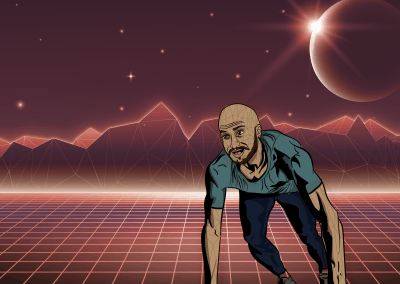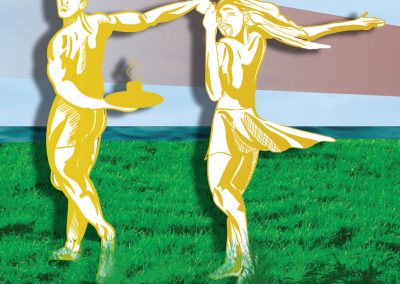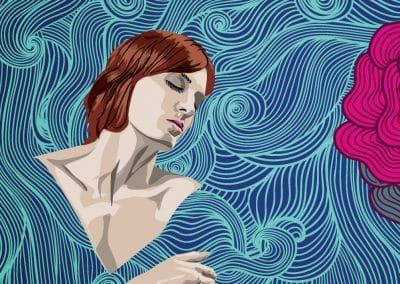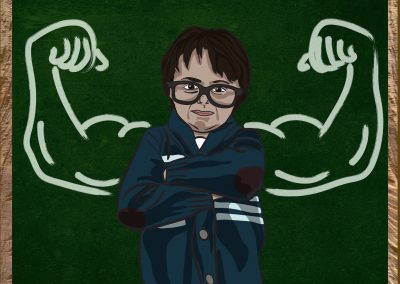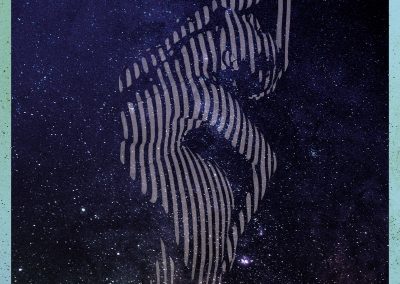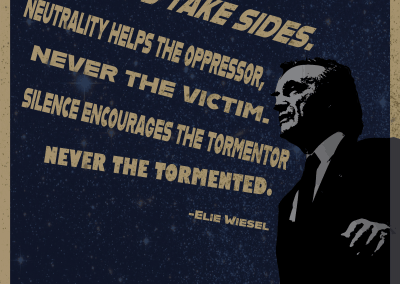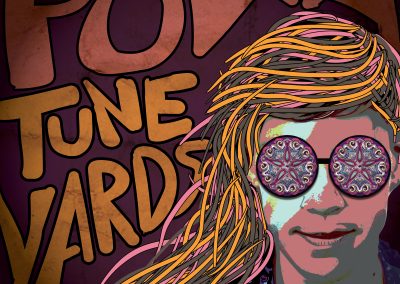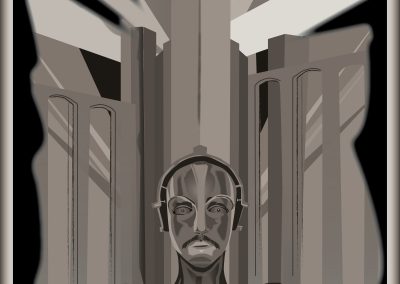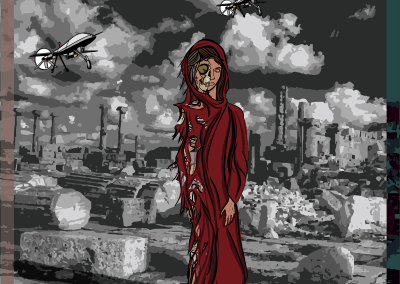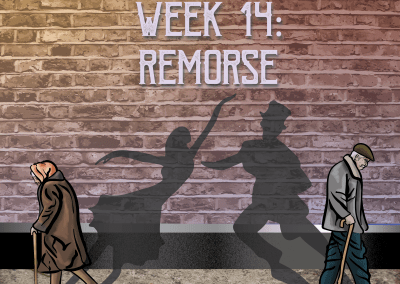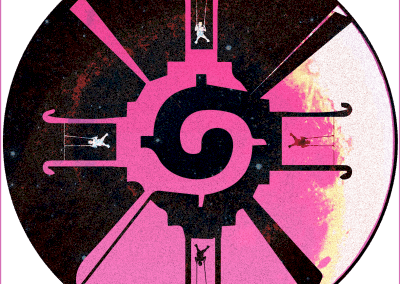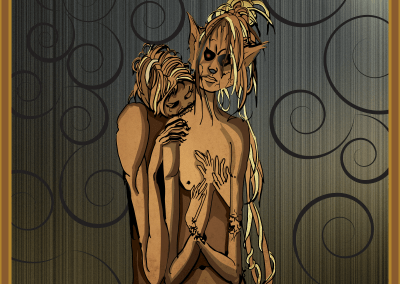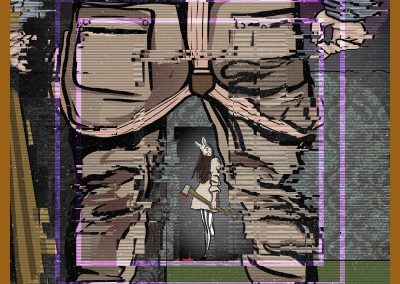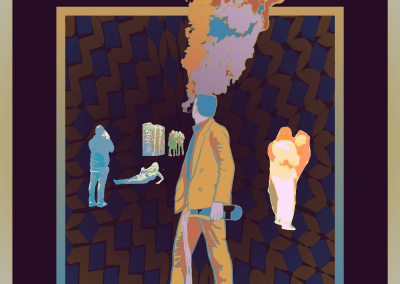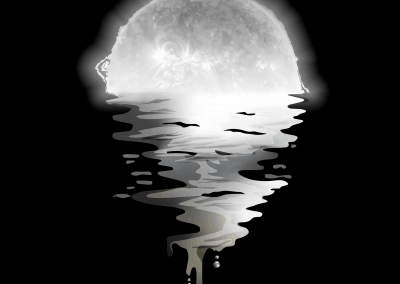
Explore Past Emotions





















































Confusion | Noun | con·fu·sion | \ kən-ˈfyü-zhən
Definition of confusion
1 : an act or instance of confusing confusion of the issue
2a : the quality or state of being confused Try to relieve their confusion. mental confusion
b : a confused mass or mixture a confusion of voices
You feel confused when you receive information that you cannot match with what you already know or believe to be true. For example, when someone you don’t know approaches you at a party and starts talking to you as if they have known you for years, or when you accidentally turned two pages of a novel at once and don’t understand the apparent jump in the story.
When people are confused, there are likely to be three outcomes: they hold on to their current beliefs and dismiss the new piece of information, they assimilate the new piece of information and overwrite the old one; or they find a way to hold both beliefs without conflict. Paradoxes are examples of the latter: at first, they seem to contain two opposing pieces of information, but upon scrutiny, the opposition was only apparent.
05-02-19 Is David Bowie Dying by the Flaming Lips w/ Neon Indian
05-02-19 Lyrics: Take your golden tooth, try to throw it to the moon, ahh Take your mouth and scream whistle wasted in your dreams, ahh Take your eyes and leave, one for love and one for me, ahh Take your ears, they must be filled with tons of meteoric dust, ahh Ohh,...
05-01-19 Where Is My Mind? by Pixies
05-01-19 Lyrics: [Intro] (Ooooh)—stop [Verse 1] With your feet on the air and your head on the ground Try this trick and spin it, yeah (Yeah) Your head will collapse if there's nothing in it And you'll ask yourself [Chorus] Where is my mind? Where is my mind? Where is...
04-30-19 Mercy, Me by What Made Milwaukee Famous
04-30-19 Lyrics: Geez, Louise! Where on earth have you been? It's been such a long time Around and back again So, I've been thinking How could we be seventeen and still believe That happiness could ever be after anyone like ourselves? Hey, did I ever tell you I could...
04-29-19 Dazed and Confused by Led Zepplin
04-29-19 Lyrics: [Chorus] Been dazed and confused for so long it's not true Wanted a woman, never bargained for you Lots of people talk and few of them know Soul of a woman was created below, yeah [Verse 1] You hurt and abuse telling all of your lies Run around sweet...
04-28-19 Push the Eagle’s Stomach by Man Man
04-28-19 Lyrics: I don't wannna know your name (my vice grips) I don't wanna know your name (bad vice cops) I don't wanna know your name (the prescription doesn't scan) We start shrinking When we hit that grill you know we will Don't beat around the black jack night...
04-27-19 Is This How You Feel by The Preatures
04-27-19 Lyrics: [Verse 1] Bright lights, you know right I'm gonna see her again tonight And now you've got me started I'm gonna shake it right tonight But then I see you and I wanna go where the beach is warm And I won't get stung And I won't get stormed by Memories...
04-26-19 An Argument With Myself by Jens Lekman
04-27-19 Lyrics: [Verse 1] Having an argument with myself down Elizabeth Street Bumping into backpackers And struggling with the parameters And the basic construction of my feet Kicking beer cans and rubbish along the concrete Crossing the street and crossing galaxies...
Past Emotions




















































Why am I doing this?
As a pervasive surveyor of communication in all capacities, I understand and appreciate the power in which emotions dictate our communicative responses. Music personally, and for countless others, can immediately trigger an emotional response, or whisk us away to vivid memory enveloped by an emotional response. This project is a single person’s response in understanding the songs that can do just this for them, and I imagine for others as well.
Of course, musical tastes being subjective, many won’t agree with my specific examples; I can only hope to convey my interpretation as best as possible. There is music that collectively presents itself one way, however, in a different lens can elicit a much different emotion. Exploring Emotions is aimed at doing just that.
Through using psychologist Dr. Plutchik’s emotional wheel several hundred songs have been curated to help explore this vast range of emotions. In addition to the 32 emotions represented on the wheel, an additional 20 were added to make this project a well-rounded year-long project. There will be a difference in opinion, and that’s great, I welcome it. These lists and these songs serve a far higher purpose than being any “best of” list. They are to help spark those uncomfortable conversations that we shelve.
As any creation dealing primarily with emotions, it’s safe to say that there will be quite a few pieces which are triggering for viewers as well as for the creator. As the creator I am operating in a completely raw and emotionally vulnerable space; I am not in pursuit of sympathy or validation of my emotions, but rather attempting to understand the emotions which are present, in all of us on a perpetual basis. We’re going to operate on basic rules: if you have nothing nice to say, then don’t say anything all. At the very least if you feel encumbered to say something evaluate yourself on whether or not it adds value. Tearing down my interpretation or concept doesn’t help you, and likely doesn’t help me. Adding insight to guide clarity through critical thought, that allows me, and anyone reading along.
What Methods Will Be Utilized?
I will be utilizing a myriad of creative modalities to try and encapsulate the feeling, and the song. Throughout my artistic career, I have picked up many techniques that have helped bridge to more massive conceptual executions. I will be utilizing these methods, and hopefully picking up a few along the way, either way, I will create the elements solely and restrict myself to 24 hours from the previous posting. I have compiled a short list to help understand the scope of work a bit further:
- Illustrations: Pretty self-explanatory. There’s a song describing an emotion, and there’s a picture trying to capture the song.
- Graphic Designs: Separate from Illustration in that they aren’t driven purely by uniquely created aesthetic but rather a careful balance of form and function. Reimaging’s of favorite posters, concepts for new posters, satirical advertisements, these are just a few representations one could expect from a graphic design entry.
- Truncated Stories: I’ve never had a name for this practice, and this seems as good as any. Years ago I began a writing practice in which I would set my 20,000 song iPod to shuffle. Whatever song came up, however long it was, that was all the time I had to write the first story that came to my mind. No time to revise, edit, or contemplate really. What came out was primarily therapy in the form of half made-up narrative, and sometimes the clarity found in giving the voice to other characters, situations, or realities entirely would create a profound connection beyond my own neurosis. I’ve always been fond of this exercise as I could instantly try a new style, tone or modality if even for just a few minutes. Since this began with music it seems fitting to carry on the tradition, and you will see many of these pop up as the sole creation for the day, and as numerous accompaniments I suspect.
- Direct Analysis of the Music/Artist: What is an Exploration of Emotions with music without analysis of the songs themselves. Some songs are going to make sense, whereas others are not immediately; its mainly at these points it falls on me, as it is my project, after all, to create the space in which to understand how it fits. This analysis will be highly subjective and based on anecdotal experiences—with that said I will make every effort to not “stretch” in trying to convey the sentiment.
- Videography: After Illustration, film, and video have been the tools I have used most in life to try and capture visual communication. I hope to create new videos, as well as utilize some of the countless hours I have been fortunate enough to capture over the years. Regardless of the footage used, rest assured it will never have been seen in the way it will be presented throughout the process.
- Photography: I have worked to understand visual communication in as many facets as possible, of course, photography is a critical element of that. I have photos I have collected that will be turned into single pieces, uniquely composited, or displayed to match the song it is being used for. Additionally, I plan on taking as many photographs that could help and capture the essence of the emotion and the music as well.
- Light Displays: I am fascinated by light, as a practical element for most humans to see, and as a medium to create with. I have experimented with numerous light displays and performance methods, and I plan on integrating these practices and understandings with some of the creations I make over the next year. There will be light shows, light photography, and hopefully other cool and inventive ways to visually convey the sentiment.
- And much more….
What are the emotions informed by?
The series of emotions were initially chosen from Dr. Plutchik’s emotional wheel where he listed 32 main emotions. Twenty new important emotions were added to delve into the deeper intricacies of the emotional range within all of us, as well as to round out the full year. The new emotions were informed by the American Psychology Association, the DSM-V manual, as well as reference texts based on contemporary research of Dr. Plutchik’s original findings.
Through years of studying emotions, Dr. Robert Plutchik, an American psychologist, proposed that eight primary emotions serve as the foundation for all others: joy, sadness, acceptance, disgust, fear, anger, surprise, and anticipation.
This means that, while it’s impossible to fully understand all distinguishable emotions, (estimated 3400,) learning how to accurately identify how each of the primary emotions is expressed within, one can be able to understand and pinpoint triggers with more success.
Past Emotions




















































































